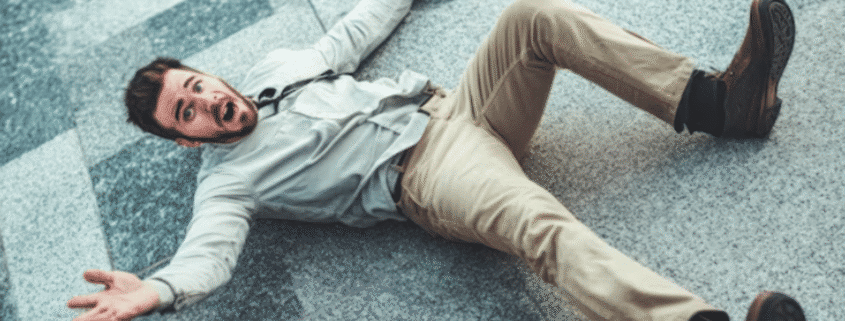Who is liable in a slip and fall accident in Utah?
A fall on someone else’s property can leave you hurt, confused, and facing bills. People often assume the owner always pays. The truth is closer to who was in charge, how long the hazard was there, and whether someone should have fixed it.
In Utah, the law looks at fault on both sides. That means your actions matter too. The right steps after a fall tell the story. They include photos, a quick doctor visit, witness names, and a report filed with the business. This blog explains who can be held responsible, what evidence helps, how Utah’s fault rules change recovery, and practical actions to protect your case.
Essential information you should know:
- Who controlled the area is key.
- Owners must warn or fix known hazards.
- Save photos and witness names right away.
- Seek medical care and keep records.
- Utah reduces awards by your fault.
- Video often decides hard cases.
- Send a preservation notice quickly.
- File suit before the four year deadline.
Which are the most frequent types of slip and fall injuries?
Injury claims arising from premises liability are treated similarly to car and truck accident claims. It comes under tort law. Those who commit torts cause harm to others through their wrongful actions. The causes of these types of injuries are numerous and range from minor injuries to serious ones.
Here is the list of some common slip and fall injuries.
- Neck and head injuries
- Cuts and lacerations.
- Bone fractures
- Head injuries (TBI)
- Trauma to the spinal cord
There are very rare scenarios in which a slip and fall accident results in nothing more than some inconvenience and embarrassment. The lawyer for your slip-and-fall case may suggest you keep track of your medical expenses. A fall lawsuit will include the nature and extent of your injuries, as well as any medical expenses that follow.
Who can be held responsible after a slip and fall?
Property owners and people who run or control a space usually face claims. The list of responsible persons including a store owner, a landlord, a homeowner, or a business manager is included in that list. If a company hires a cleaner or repair crew, that contractor can share blame when their work causes or leaves a hazard. A product maker may join a claim if a loose mat or defective flooring caused the fall.
Utah law focuses on duty and notice. The person you sue must have had the responsibility to keep the area safe. For businesses, that duty is usually strong because they invite customers. For private homes, the duty depends on why you were there. If you were a guest, the owner owes care. If you were trespassing, you may have fewer rights.
Proving responsibility is about timing and control. If a spill sat for a long time and staff did not clean or warn, that helps your case. If a hazard appears seconds before someone falls, it is harder to prove the owner knew. That does not mean you cannot recover, but it does mean evidence matters.
Finally, remember that multiple people can share fault. There may be some fault on the part of the landlord, while a contractor or other visitor may also be responsible.
What duties do owners and managers have under Utah law?
Owners and managers must keep invited guests reasonably safe. For businesses that invite the public, that duty is stronger because people shop and move through the space. They must inspect, fix hazards, and warn about dangers they know or should know about. For landlords, the duty covers common areas and known problems in units.
There are two ways courts see notice. One is actual notice. That means someone who works for the owner knew about the risk. The other is constructive notice. That means the issue existed long enough that a normal inspection should have found it. Stores with regular cleaning logs usually have to show those logs to avoid blame. If a landlord ignores an email reporting broken stairs, that helps show notice.
Visitor type matters too. A customer or guest who is invited into a place usually has stronger protection than a trespasser. Short term renters and hotel guests get protection similar to customers. If you are there for a business purpose, the owner’s duty is higher. If a maintenance company was in charge of the area, the business and the company can both be responsible. In short, who had the job of keeping the place safe is the core question.
Evidence that proves liability in a slip and fall
Good evidence makes your story clear. Take photos right away. Get wide shots and close ups. Show the hazard, where you fell, the lighting, and any nearby signs or displays. If it was rainy or icy, take a photo of the ground and the weather. Video is even better when available. Collect witness names and short notes on what they saw. Ask staff for an incident report and get a copy.
Center list of helpful items:
- Clear photos from multiple angles.
- Names and phones of witnesses.
- Any incident report from staff.
- Medical records and bills.
- Footwear or torn items that show damage.
Security cameras often record the event or the time before it happened. That footage is very useful and can show how long a hazard was present. If you think a camera captured your fall, do not wait. Video can be recorded within days
What compensation can you claim after a slip and fall?
You can ask for the money it cost you because of the fall.
Here’s the list of that damages:
- Hospital bills
- Doctor visits
- Therapy
- Prescriptions
- Medical equipment
- Lost pay
Save every bill and pay stub. These economic losses are easy to list and add up.
You can also ask for non-economic losses. That covers pain, loss of sleep, worry, and limits on life activities. If the conduct was very bad, punitive damages may apply. But that is rare in slip and fall cases. Most claims focus on medical costs, lost income, and pain and suffering. A lawyer can get medical experts to estimate long-term care costs if you need them. That lets you demand a fair figure now to cover future needs.
Conclusion
Do not post the full slip and fall injury story on social media without consulting Utah slip and fall attorney. Insurers look for posts that contradict your claim. Write down your pain, therapy, and limits on activities every day. It would be best if you let a lawyer know if you think cameras recorded the event. They can send a formal preservation letter asking the business to keep footage and documents. This letter often stops routine deletion and protects your case while it is checked.
FAQs
Who normally pays after a slip and fall?
Usually whoever controlled and maintained the space. Those can include businesses, landlords, cleaners, contractors or any other responsible person.
Can I visit the doctor even if I feel okay?
Yes. Some injuries show up later. A medical visit creates a record linking your pain to the fall and supports claims for treatment and future care. Keep every medical bill and note.
Can I recover if I was partly at fault?
Yes if you are less than fifty percent at fault. Your award will be reduced by your share of blame. If you are more than 50% at fault, you typically cannot recover.
How much does a slip and fall lawyer overall cost?
Many work on contingency. That means they take a percentage of what you recover and no fee if you do not win. Ask the agency about costs and any expenses.









